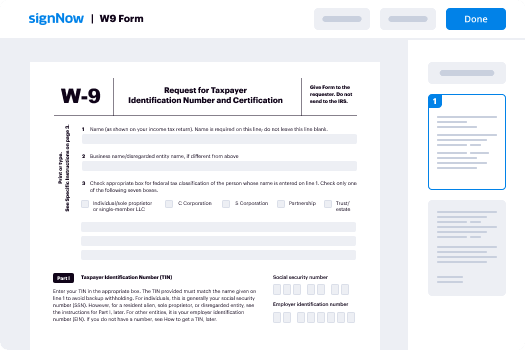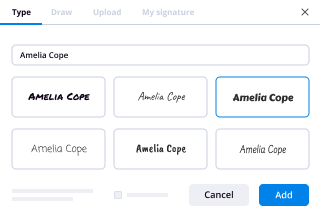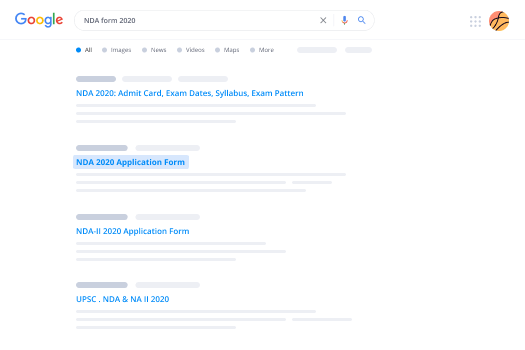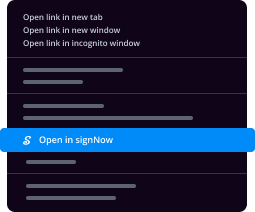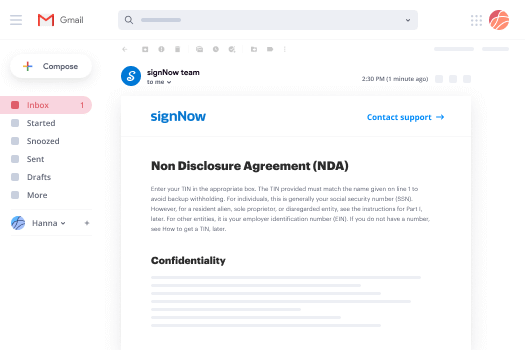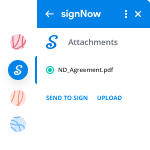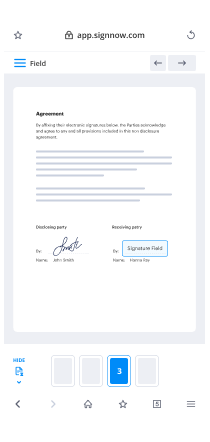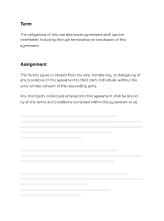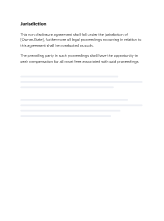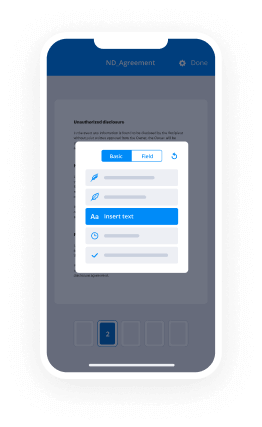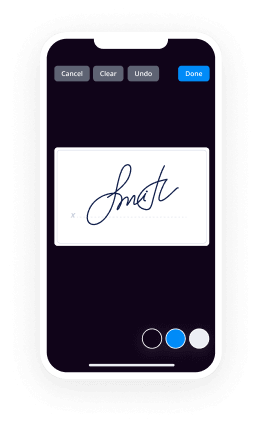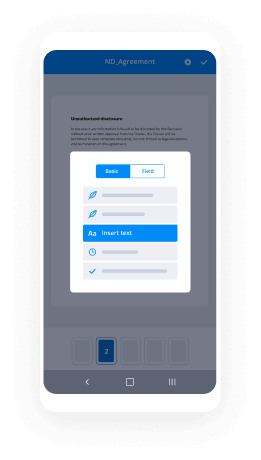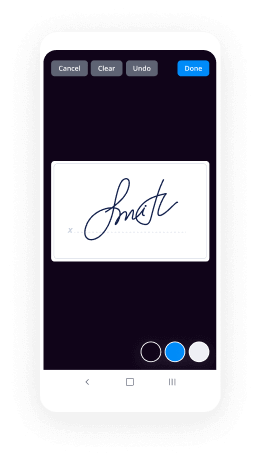Try Seamless eSignatures: How to Get a Signature in Word
- Quick to start
- Easy-to-use
- 24/7 support
Simplified document journeys for small teams and individuals




We spread the word about digital transformation
Why choose airSlate SignNow
-
Free 7-day trial. Choose the plan you need and try it risk-free.
-
Honest pricing for full-featured plans. airSlate SignNow offers subscription plans with no overages or hidden fees at renewal.
-
Enterprise-grade security. airSlate SignNow helps you comply with global security standards.







Quick-start guide on how to get a signature in Word
The airSlate SignNow eSignature solution is here to substitute your handwritten autograph and improve virtually any paper-based, manual workflows. Signing forms in electronic format saves time, cuts expenses, and provides you the flexibility to sign agreements and business forms from anywhere and at any time, on any system. Read on to learn about tips on how to begin improving your approval workflows and sign and send documents for signing electronically.
Complete the following steps below to find out how to get a signature in Word:
- Launch your browser and visit signnow.com.
- Sign up for a free trial run or log in with your email or Google/Facebook credentials.
- Select User Avatar -> My Account at the top-right corner of the webpage.
- Customize your User Profile with your personal information and altering configurations.
- Make and manage your Default Signature(s).
- Go back to the dashboard webpage.
- Hover over the Upload and Create button and select the appropriate option.
- Click on the Prepare and Send button next to the document's name.
- Input the email address and name of all signers in the pop-up box that opens.
- Make use of the Start adding fields option to begin to edit file and self sign them.
- Click SAVE AND INVITE when you're done.
- Continue to configure your eSignature workflow employing extra features.
It can't be simpler to learn how to get a signature in Word than it is with airSlate SignNow. Create your account, edit and sign templates, request signatures, and keep track of every activity taken to your documents.
How it works
Rate your experience
Understanding the purpose of obtaining a signature in Word
The process of obtaining a signature in Word serves various purposes, including formalizing agreements, acknowledging receipt of documents, and ensuring compliance with legal requirements. When you create a document in Word that requires a signature, it is essential to ensure that the document is clear and concise, outlining the terms and conditions that the signatory agrees to. This clarity helps prevent misunderstandings and facilitates smoother transactions.
In a digital context, obtaining a signature in Word can streamline workflows, allowing users to send documents electronically for signature, rather than relying on traditional paper-based methods. This not only saves time but also enhances the overall efficiency of document management.
Steps to complete the signature process in Word
To complete the signature process in Word, follow these steps:
- Open the document in Microsoft Word that requires a signature.
- Navigate to the location in the document where the signature is needed.
- Insert a signature line by selecting the “Insert” tab, then choosing “Signature Line” from the drop-down menu.
- Fill in the necessary details in the signature setup box, such as the signer's name, title, and email address.
- Once the signature line is inserted, save the document.
- Share the document via email or a secure file-sharing method for the recipient to review and sign.
After the recipient signs the document, they can return it to you electronically, ensuring that the entire process is efficient and traceable.
Legal considerations for signatures in Word
When obtaining signatures in Word, it is crucial to understand the legal implications of electronic signatures. In the United States, the Electronic Signatures in Global and National Commerce (ESIGN) Act and the Uniform Electronic Transactions Act (UETA) provide a legal framework that recognizes electronic signatures as valid and enforceable. This means that as long as the signatory intends to sign and the signature is associated with the document, it holds legal weight.
Additionally, ensure that the document complies with any industry-specific regulations that may dictate how signatures must be obtained and stored. Understanding these legal aspects helps protect both parties involved in the transaction.
Security and compliance guidelines for electronic signatures
Maintaining security and compliance when using electronic signatures is essential. To ensure the integrity of signed documents, consider the following guidelines:
- Use secure platforms, such as airSlate SignNow, that offer encryption and secure storage for signed documents.
- Implement authentication measures to verify the identity of signers, such as email verification or password protection.
- Keep a detailed audit trail of all actions taken on the document, including timestamps and IP addresses, to provide transparency.
- Regularly review and update security protocols to protect against data breaches and unauthorized access.
By adhering to these guidelines, you can ensure that your electronic signature processes are both secure and compliant with applicable laws.
Sending and signing methods for documents
When it comes to sending and signing documents, there are several methods available that enhance the user experience. Using airSlate SignNow, users can easily send documents for signature through various channels:
- Web: Upload documents directly to the airSlate SignNow platform and send them via email for signature.
- Mobile: Utilize the airSlate SignNow mobile app to send documents on the go, allowing for flexibility and convenience.
- Integration: Connect airSlate SignNow with other applications, such as Google Docs or Dropbox, to streamline the document preparation and signing process.
These methods not only simplify the signing process but also ensure that users can manage their documents effectively, regardless of their location.
Best practices for managing signed documents
Once a document has been signed, proper management is vital. Here are some best practices for handling signed documents:
- Store signed documents in a secure, organized manner, using cloud storage solutions that offer encryption.
- Regularly back up signed documents to prevent data loss.
- Establish a clear naming convention for files to facilitate easy retrieval.
- Implement access controls to ensure that only authorized personnel can view or modify signed documents.
By following these practices, you can maintain the integrity and accessibility of your signed documents, ensuring they are readily available when needed.
-
Best ROI. Our customers achieve an average 7x ROI within the first six months.
-
Scales with your use cases. From SMBs to mid-market, airSlate SignNow delivers results for businesses of all sizes.
-
Intuitive UI and API. Sign and send documents from your apps in minutes.
FAQs
-
What is the easiest way to get a signature in Word?
To get a signature in Word, you can use the airSlate SignNow integration, which allows you to easily send documents for eSignature directly from Word. This feature streamlines the signing process, making it quick and efficient. Simply upload your document, add the necessary fields, and send it out for signature.
-
Can I use airSlate SignNow to get a signature in Word for free?
While airSlate SignNow offers a free trial, ongoing use to get a signature in Word will require a subscription. The pricing plans are designed to be cost-effective, providing great value for businesses of all sizes. You can explore different plans to find one that fits your needs.
-
What features does airSlate SignNow offer for getting signatures in Word?
airSlate SignNow provides a range of features for getting signatures in Word, including customizable templates, automated workflows, and real-time tracking of document status. These features enhance the signing experience and ensure that you can manage your documents efficiently. Additionally, you can easily integrate with other tools to streamline your processes.
-
Is it secure to get a signature in Word using airSlate SignNow?
Yes, using airSlate SignNow to get a signature in Word is secure. The platform employs advanced encryption and complies with industry standards to protect your documents and data. You can confidently send and receive signed documents knowing that your information is safe.
-
How does airSlate SignNow integrate with Microsoft Word?
airSlate SignNow integrates seamlessly with Microsoft Word, allowing you to get a signature in Word without leaving the application. You can access the SignNow features directly from Word, making it easy to send documents for signature. This integration enhances productivity by keeping all your work within one platform.
-
What are the benefits of using airSlate SignNow to get a signature in Word?
Using airSlate SignNow to get a signature in Word offers numerous benefits, including time savings, improved efficiency, and enhanced document management. The platform simplifies the signing process, allowing you to focus on your core business activities. Additionally, it reduces the need for printing and scanning, contributing to a more sustainable workflow.
-
Can I track the status of my documents when getting a signature in Word?
Absolutely! airSlate SignNow allows you to track the status of your documents when you get a signature in Word. You will receive notifications when your document is viewed, signed, or completed, giving you full visibility into the signing process. This feature helps you stay organized and informed.





























